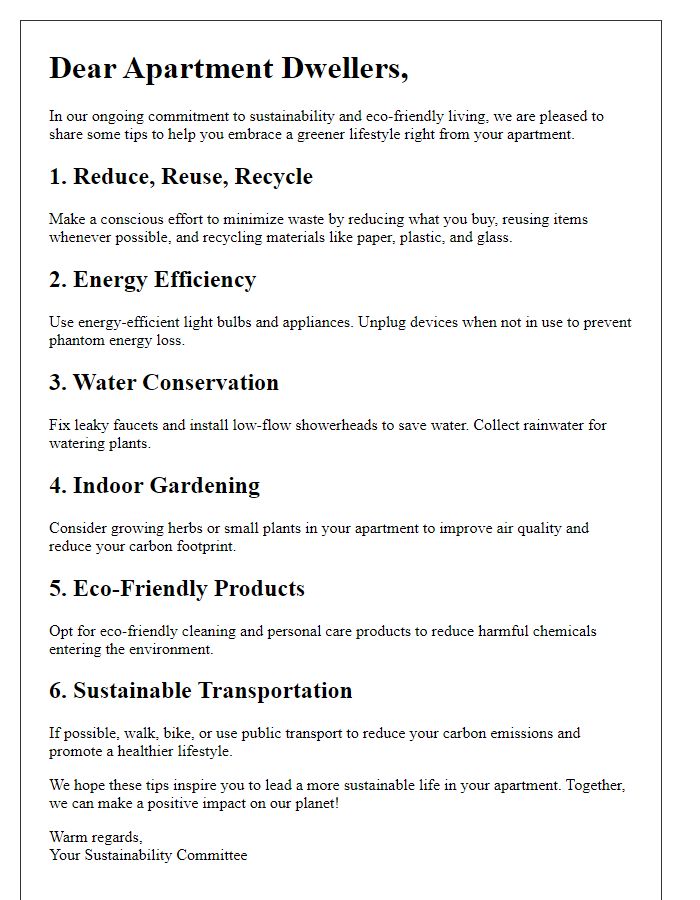Hello there! If you're looking to save on energy costs while creating a more eco-friendly home, you're in the right place. In this article, we'll explore some practical energy-saving tips specifically for tenants that are easy to implement and can make a significant impact. So, grab a cup of coffee and get ready to discover how simple changes can lead to substantial savingsâlet's dive in!

Efficient lighting solutions
Efficient lighting solutions can significantly reduce energy consumption in rental properties, such as apartments or condos. LED bulbs, known for their longevity and energy efficiency, consume up to 75% less energy compared to traditional incandescent bulbs. These bulbs have an average life expectancy of 25,000 hours, minimizing replacement frequency and waste. Smart lighting systems, including motion sensors and smart bulbs, offer additional savings by automatically adjusting brightness levels based on occupancy and time of day. Utilizing natural light during daylight hours by opening blinds and curtains can further decrease reliance on artificial lighting, creating a healthier living environment while lowering energy bills. Regularly cleaning light fixtures can also optimize brightness and energy efficiency in every room of the home.
Appliance usage optimization
Optimizing appliance usage in your household significantly contributes to energy savings. Utilizing energy-efficient appliances, such as Energy Star-rated (a certification indicating higher efficiency), can reduce energy consumption by up to 30% compared to traditional models. Running washing machines and dishwashers during off-peak hours (typically between 9 PM and 7 AM) can take advantage of lower electricity rates and reduce strain on the grid. Setting the refrigerator temperature to a steady 37 degrees Fahrenheit (3 degrees Celsius) enhances food preservation while minimizing energy use. Regular maintenance, such as cleaning filters and coils, ensures appliances operate efficiently, potentially saving you an average of 15% on energy bills. Additionally, unplugging devices when not in use, particularly chargers and small electronics, prevents phantom load (unnecessary energy consumption while devices are powered off), which can account for 10% of household energy use.
Heating and cooling practices
Efficient heating and cooling practices significantly reduce energy consumption and lower utility bills in residential properties. Setting thermostats to a comfortable temperature, typically around 68 degrees Fahrenheit in winter and 78 degrees Fahrenheit in summer, optimizes energy use. Regular maintenance, including cleaning or replacing filters in HVAC systems, ensures maximum airflow and efficiency. Utilizing programmable thermostats allows for automatic adjustments based on occupancy patterns, saving energy during unoccupied hours. Closing curtains during hot days can block sunlight, reducing reliance on air conditioning systems. Conversely, using space heaters in rooms rather than heating an entire house can enhance comfort while conserving energy. Seal windows and doors to prevent drafts, ensuring consistent indoor temperatures. Additionally, exploring energy-efficient appliances, certified by ENERGY STAR, contributes to long-term savings and sustainability efforts.
Water conservation methods
Implementing effective water conservation methods not only reduces utility bills but also helps protect local water resources, especially in areas facing drought, such as California, where water restrictions may be enforced during peak summer months. Simple actions like fixing leaks in faucets and toilets can save approximately 10,000 gallons a year, while installing low-flow showerheads can decrease water usage by nearly 40% compared to standard models. Collecting rainwater in barrels for gardening and landscape maintenance further conserves water, as does running dishwashers and washing machines with full loads only, which can save up to 1,600 gallons annually. Educating tenants about the importance of mindful consumption and setting timers for shorter showers can significantly impact overall water savings, promoting a sustainable living environment.
Awareness and behavioral changes
Raising tenant awareness about energy-saving practices is crucial for reducing overall energy consumption. Simple actions such as turning off lights (when leaving a room) can lead to significant savings over time, as lighting accounts for approximately 15% of electricity usage in residential buildings. Adjusting the thermostat (to a lower setting during winter and a higher setting during summer) can also contribute to energy efficiency, with adjusted thermostats saving up to 10% on heating costs. Encouraging the use of energy-efficient appliances, such as ENERGY STAR-rated refrigerators and washing machines, can further reduce energy consumption significantly. Additionally, promoting the practice of unplugging chargers and electronics when not in use can minimize phantom loads, which can account for up to 10% of an average household's energy costs. Providing resources on these simple behavioral changes can foster a more sustainable living environment for tenants while lowering utility bills and minimizing the carbon footprint.
Letter Template For Tenant Energy Saving Tips Samples
Letter template of budget-friendly energy conservation tips for occupants













Comments